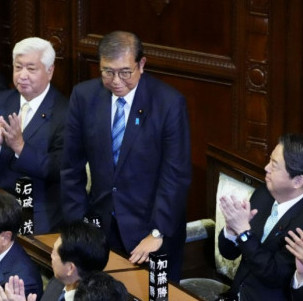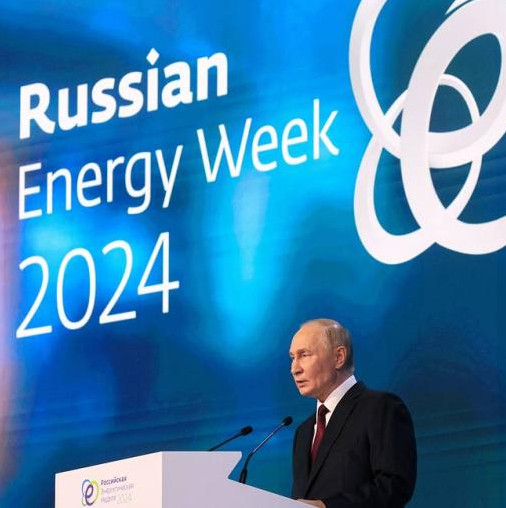The unilateral withdrawal aggravated the situation by breaking the correlation between the offensive and defensive arms reductions, which underlay all of the USSR-USA previous strategic weapons agreements. The situation got worse after the Moscow Treaty on Strategic Offensive Reductions was signed on May, 24, 2002, as it set no limits on American ABM system at all.
The reduction of each nation’s strategic nuclear weapons to between 1,700 and 2,200 warheads by December stipulated by the Moscow Treaty looks like a specific step toward nuclear reduction. But in fact, the Treaty shuts off any new agreements on nuclear disarmament based on equal safety principles and gives the United States a long-term advantage at all such negotiations.
Having released itself from the fetters of ABM Treaty, the United States fortified its NMD Program by actively deploying the system throughout the United States with parts of it installed in other countries, mainly in Europe and Japan. Mass media informs that the future American AMB system has been tailored as an Iron Net. The net resembles a giant triangle with one angle in Eastern Europe, and two others within the United States – in Alaska at Fort Grilly and at the Vanderberg Base in California.
Contrary to its earlier promises not to deploy its weaponry closer to Russia’s borders, Washington actively persuaded Poland, Czech Republic, and Hungary to place important elements of its missile defense program in their territory: the underground base fitted out with over 100 three-stage interceptor missiles in Poland, and an additional radar system in Hungary and Czech Republic. American ABM objects deployment in France and Germany is under discussion as those countries would rather see their territories American-free, but have a European ABM system of their own. In addition, missile defense installations could possibly be placed at Britain’s Fylingdale base in North Yorkshire, which has long been leased out to the US Army. Official Washington openly declared only the upgrading of the existing radars on their territories, which could be integrated into the newly-built ABM system. According to Washington’s plans, the European branch of the NMD program is designed to detect launched missiles and destroy them at the early stage.
The United States justify the advanced deployment on the European territory by a possible threat from Iran. There are few doubts that the NMD system is targeted at neutralizing Russia’s nuclear-missile potential.
In addition to the plans of placing NMD objects in Eastern Europe, the United States has started the initial deployment of its major ground elements in Alaska and California (as of 2006, more than 18 interceptor missiles were deployed in Alaska). Preparations for installing tracking radars in Greenland, the Baltic republics, Great Britain and Denmark are underway. Russian Defense Ministry experts are convinced that the NMD system elements are clearly targeted against Russia’s possible missile attack.
Evidently, the deployment of NMD in Japan aimed at Russia, People’s Republic of China and North Korea. Japan had started its own missile defense system development and cooperation programs with analogous American systems back in 1998. The US and Japanese deputy ministers, who are in charge of the issue, have been regularly negotiating since 2004 over the NMD system deployment. An efficient ABM program in the region is expected to take 7 to 10 years starting from 2004, and require 800 to 1,000 billion of Japanese Yens. Naval ships patrolling the Sea of Japan will be equipped with missile defense complexes, and ground forces as well. Theoretically, Washington is planning to build Japan’s own missile defense system, installed with radar locators for early detecting of intercontinental ballistic missiles.
Meanwhile, experts independent of the Pentagon report that the cost of the projected missile defense system and its operation cost for the next 20 years will add up to nearly $300 billion, inflation included.
Russian experts think there is no direct threat to Russia from the American ABM system. So far the United States has no systems which could destroy Russian ballistic missiles at the start when they are most vulnerable. In addition to that Russian forces are armed with ground mobile complexes and strategic nuclear ships which are virtually undetectable.
Although Pentagon claims that American complexes are able to hit Russian long-range missiles at the moment of splitting warheads, this fact remains unconfirmed. Major General Vladimir Slipchenko, academician and geopolitical expert, said that only half of the dozen tests of the new system were successful. He said that small spacecraft designed back in Ronald Reagan’s star wars era could have been very efficient in hitting targets. But in this case several hundreds of such interceptors would have to be orbited - a task beyond America’s present-day potential even with its huge economic potential. That is the main reason why the US is trying to make its global ABM a self-supporting project, meaning the missile defense means would be sold to third parties. As it was mentioned before such proposals were made to Japan and certain European countries.
It is crucial for the Bush administration to put at least a few missile interceptors on combat duty in light of his pre-election pledges to protect the nation from possible terrorist missile attacks. Even though this missile defense system is of no help against terrorist attacks. It is inefficient in destroying intermediate and long-range missiles used by terrorists to threaten the world. Extended American ABM system will stimulate other countries to upgrade their offensive initiatives, boosting their weaponry programs thus shattering global stability.
Russian diplomatic and military circles warn that America’s withdrawal from the ABM Treaty in June, 2002 misbalanced international strategic stability and its plans to create a global ABM system cannot be justified.
The problem of anti-ballistic defense influences the basics of strategic stability, the global and regional balance of forces, escalates international antagonism and aggravates global safety as Washington’s projected NMD system can jeopardize all the existing basic international agreements on strategic stability.









